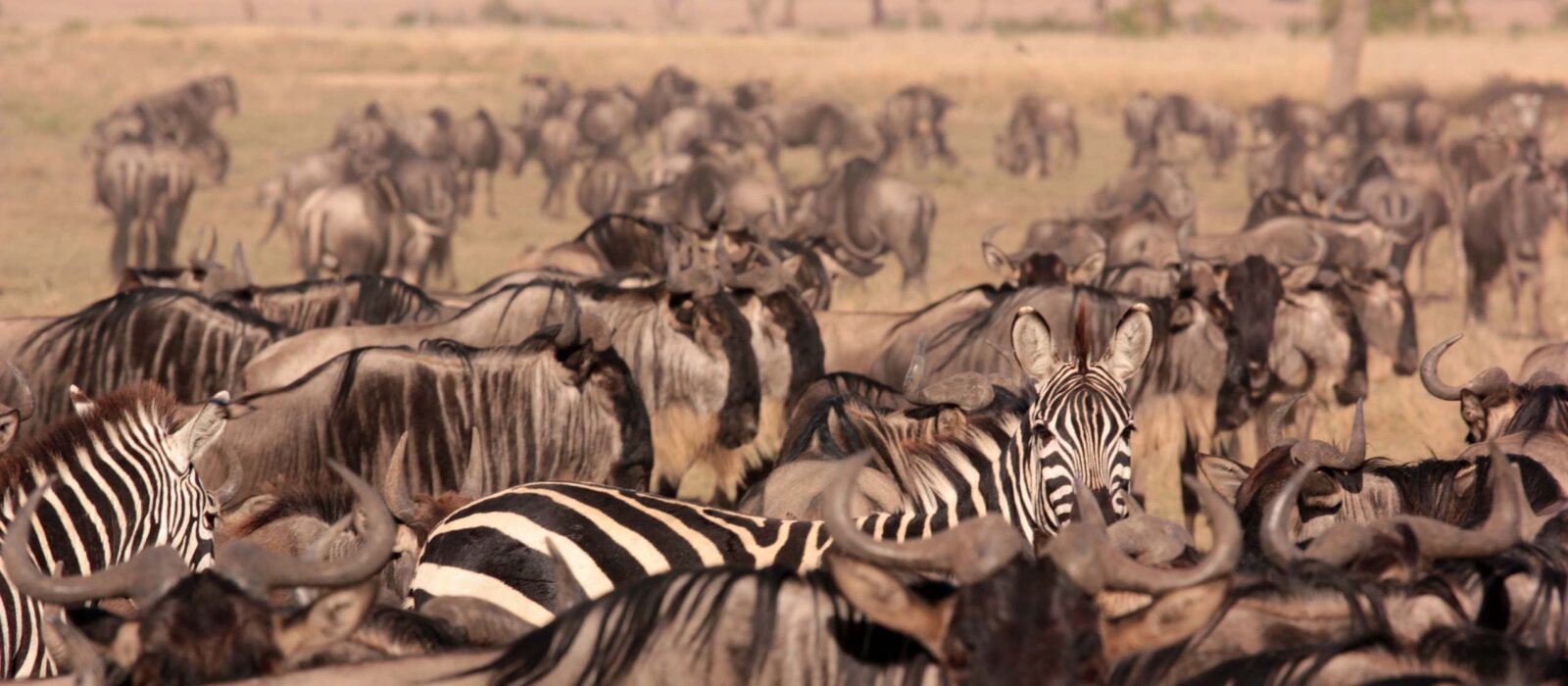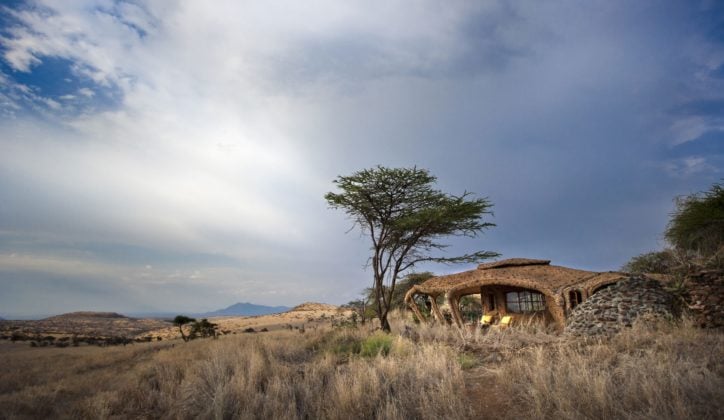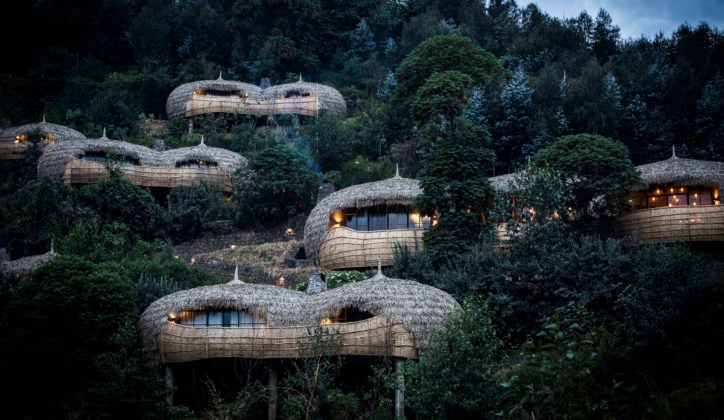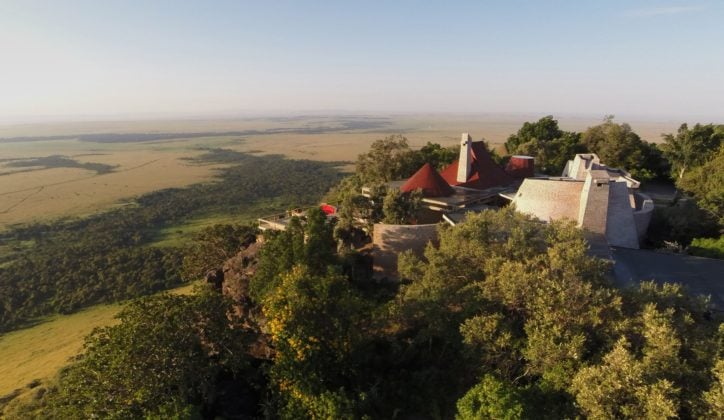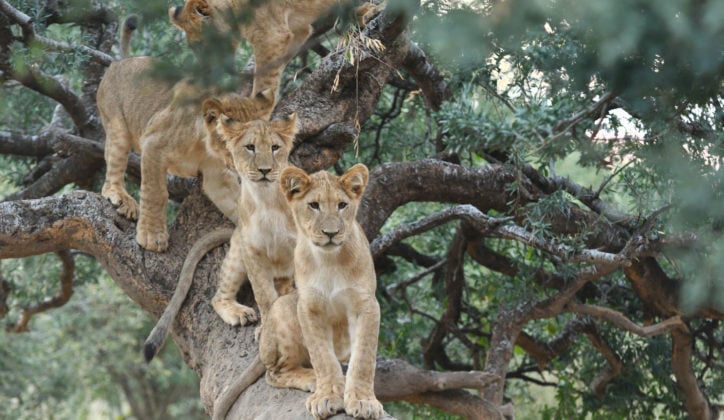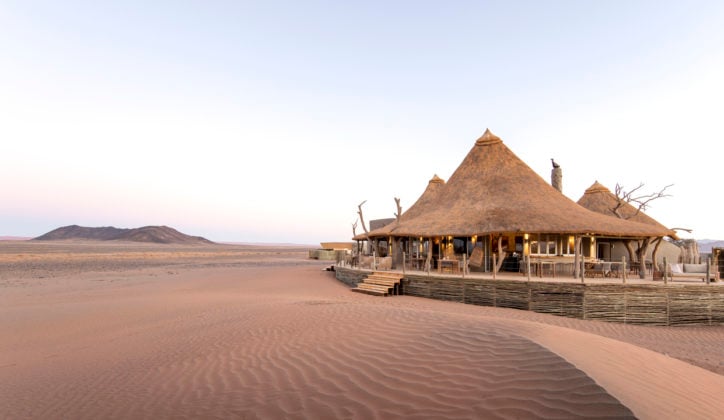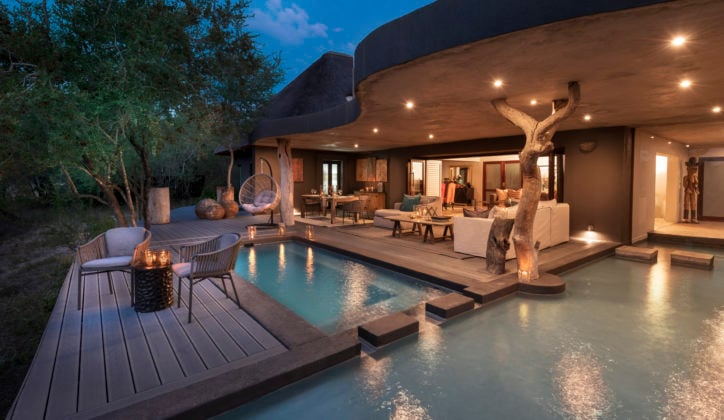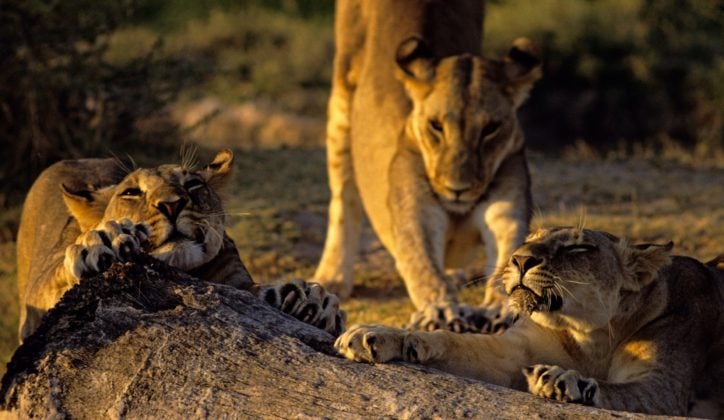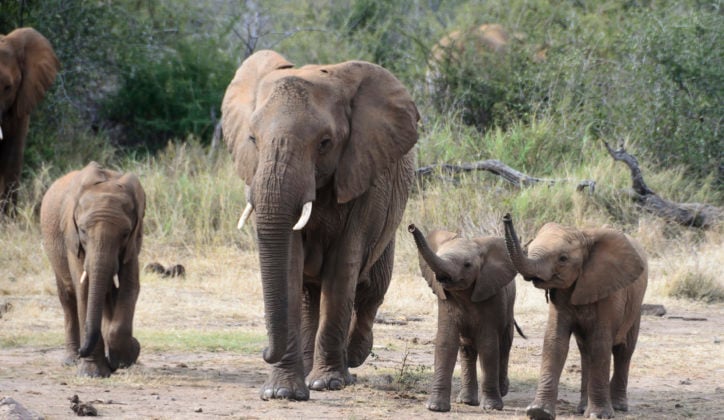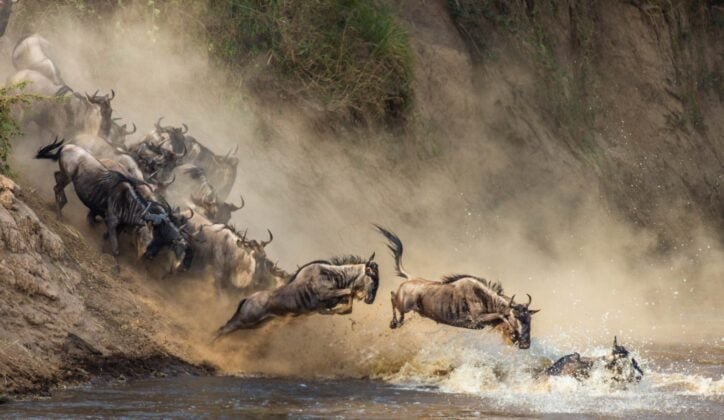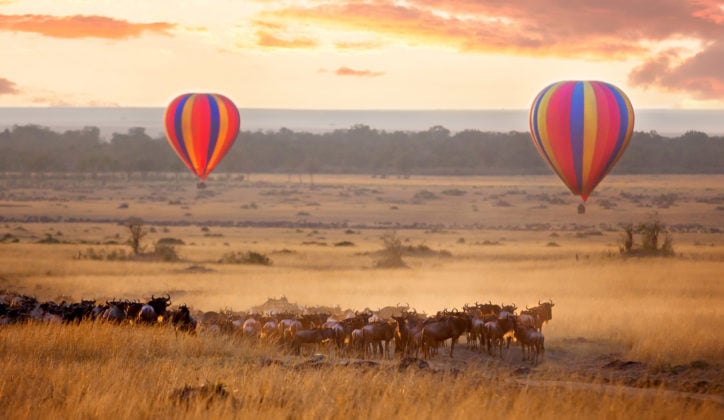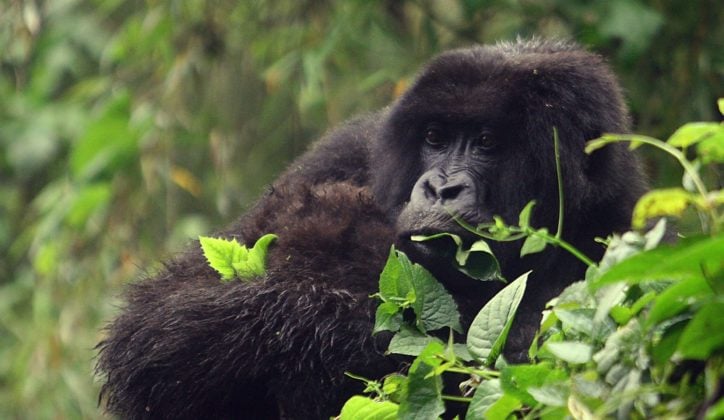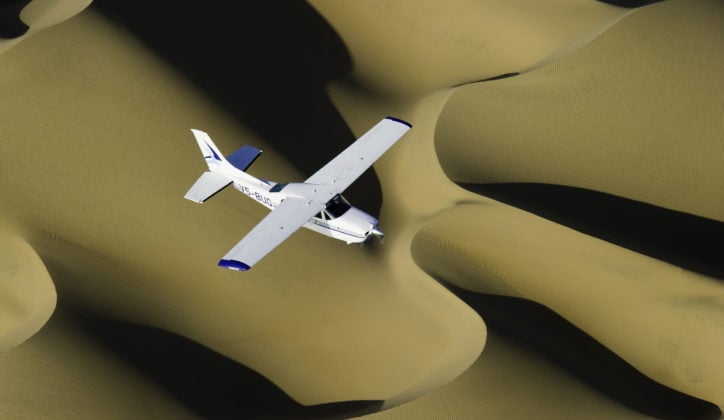Published on: September 27th, 2018
Last modified: April 19th, 2024
Where’s the best place to go on safari in Africa? It’s a common question among travellers, and it often comes down to a choice between East Africa and Southern Africa. Both regions are brimming with spectacular landscapes, animals and activities – so how do you choose?
East Africa is known for its abundant wildlife, and captivating cultural diversity, making it ideal for safari-focused trips. On the other hand, Southern Africa is known for classic safaris and bucket-list destinations like Cape Town and Victoria Falls. Choosing between East African safaris and Southern African safaris depends on your specific interests and preferences.
To help you decide, we’ve asked our travel designers to compile a detailed guide to East Africa vs Southern Africa safaris. Below we’ll compare the wildlife, scenery, parks, lodges and more in each region, so you can choose best African safari destination for you.
What’s the Difference Between East Africa and Southern Africa?
Although they’re both incredible destinations, each of these two regions of Africa has its own unique attractions and allure. They’re also both quite large, including multiple countries and a wide variety of landscapes, climates and habitats to explore.
East Africa, which encompasses Kenya, Tanzania, Rwanda and Uganda, is famed for its incredible cultures and impressive wildlife encounters like the Great Migration and gorilla trekking. Kenya and Tanzania are known for their wide-open plains and huge herds of animals, while Rwanda and Uganda boast dense jungles and magical mountain landscapes.
Southern Africa includes Botswana, South Africa, Zambia, Zimbabwe, Namibia and Mozambique. It offers diverse safari experiences, from the lush Okavango Delta to the vast plains of the Kalahari. Its appeal also extends beyond safaris, including the impressive Victoria Falls on the Zambia-Zimbabwe border and the pristine beaches of Mozambique.
East African and Southern African Wildlife and Landscapes
East Africa is world-famous for its wildlife. Here you can see not only the Big Five, but also cheetahs, giraffes, zebras and a variety of bird species. You can also witness the migrations of wildebeests, lions and crocodiles across the region; meet mountain gorillas in Rwanda; see rhinos in Kenya; and observe chimpanzees in Uganda, Rwanda and Tanzania.
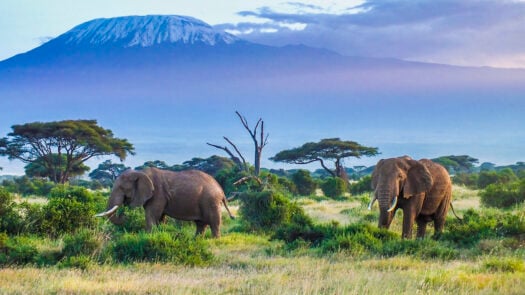
The landscapes of East Africa are incredibly varied, from the sweeping savannahs of the Serengeti to the iconic snow-capped peak of Mount Kilimanjaro. Then there’s the enormous Ngorongoro Crater and the dramatic Great Rift Valley – both incredibly biodiverse. For something different, discover the gorgeous coastal regions of Kenya and Zanzibar.
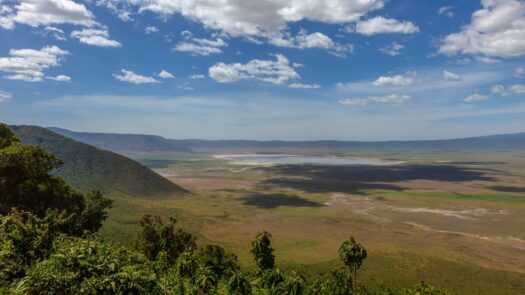
Southern Africa is among the best wildlife destinations on earth. You’ll find the Big Five in the Kruger and Sabi Sands, and maybe even spot the elusive leopard. The Moremi Game Reserve is famous for big cats, while Namibia is home to desert-adapted animals. Look out for meerkats, wild dogs, antelope and elephants, especially in Botswana and Zimbabwe.
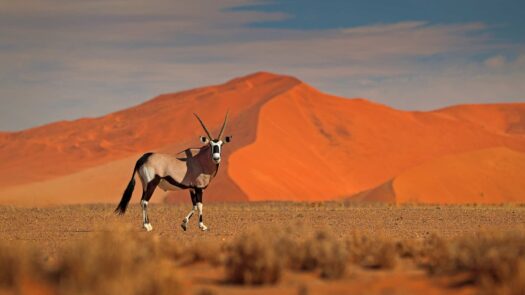
Southern African landscapes run the gamut from arid desert plains to towering rocky peaks. There’s the Okavango Delta with its incredible floodplains, the soaring Drakensberg Mountains of South Africa and of course the stunning Victoria Falls. Don’t miss the eerie Skeleton Coast of Namibia and the absolutely incredible Whale Coast for whale watching.
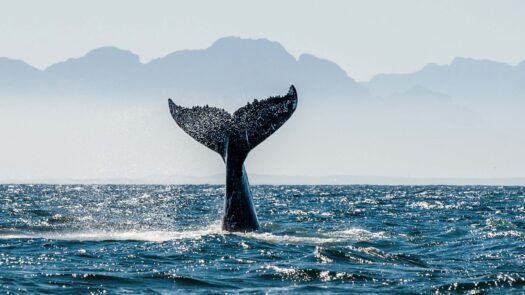
Safari Activities in East Africa and Southern Africa
While many top safari destinations offer similar activities, some places are particularly well known for specific experiences. In Southern Africa, both Zimbabwe and Zambia are great for walking safaris and sleeping out in the wilderness. Namibia promises excitement for even seasoned safari-goers, with one-of-a-kind opportunities like tracking rhinos on foot.
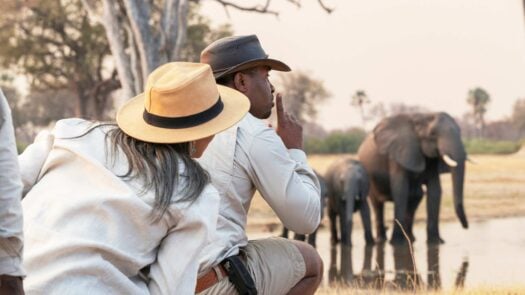
East African countries like Tanzania and Kenya are ideal for classic jeep safaris. Kenya in particular has a wide variety of activities, from helicopter tours to nighttime game drives, while Tanzania is well known for fly camping and hot air balloon safaris. Rwanda and Uganda are renowned for gorilla trekking, which is entirely different from the usual safari experience.
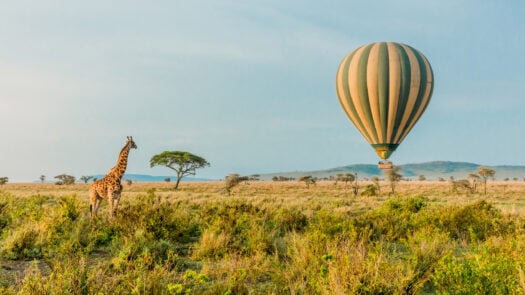
Even if safaris are your priority, it’s also nice to have other activities available. In East Africa you can climb Mount Kilimanjaro, meet the local Maasai and Samburu people of Kenya and learn about conservation efforts. Southern Africa offers incredible stargazing in Namibia, the stunning Victoria Falls, the bustling city of Cape Town and South Africa’s verdant Winelands.
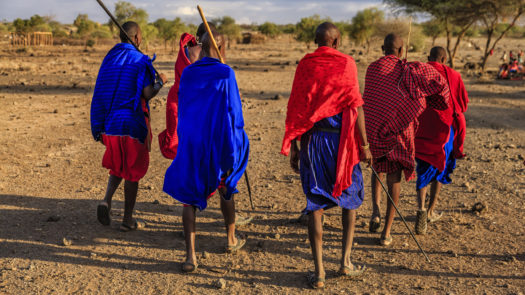
Combining Beaches and Safaris in East Africa or Southern Africa
If there’s one thing that can make an African safari adventure even better, it’s adding on a few days at an idyllic beach. This provides the perfect contrast to the thrilling wilderness activities of an African safari, allowing you some time to relax and enjoy the continent’s gorgeous coastlines and islands. There are also plenty of activities available, from snorkelling to sailing.
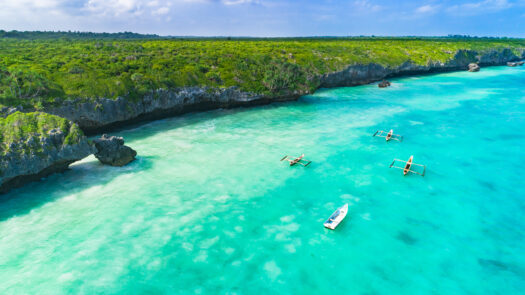
In East Africa, we suggest visiting the intriguing island of Zanzibar, known for its eclectic blend of cultures, sparkling waters and world-class kite surfing. Safaris in Southern Africa can easily be combined with a trip to the Seychelles, an oasis of sustainable luxury and biodiversity, or the coast of Mozambique, an especially authentic and peaceful paradise.
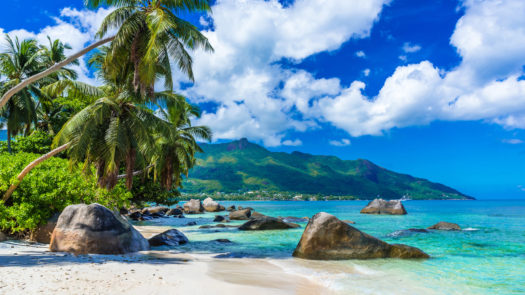
East Africa National Parks or Southern Africa National Parks?
Africa has more than 200 national parks and game reserves, and many of them are concentrated in the eastern and southern regions. While some parks are renowned for their postcard-worthy landscapes, others are ideal for spotting certain species.
Two of the most iconic places in East Africa are Serengeti National Park and Maasai Mara National Reserve, both of which are part of the annual Great Migration route. Rwanda has both Akagera and Volcanoes National Park – with its legendary mountain gorillas – while Uganda is home to Kibale Forest National Park’s tropical rainforests and chimpanzees.
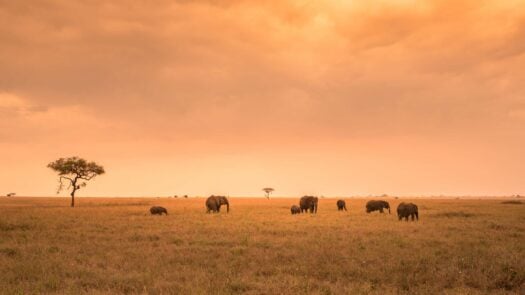
Top parks in Southern Africa include Zimbabwe’s Mana Pools, home to hippos and crocodiles, and Hwange, known for elephants and lions. In Zambia there’s the rugged beauty of Kafue and South Luangwa, while Namibia offers the enormous Etosha. Then there’s Kruger National Park in South Africa, with some of the continent’s best game viewing and luxury lodges.
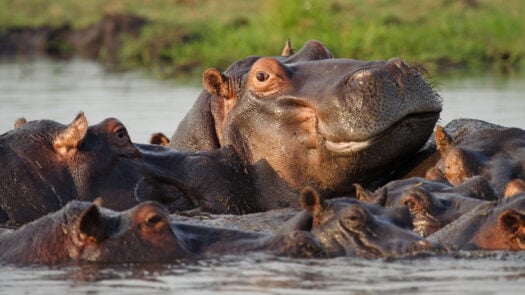
When to Visit East Africa and Southern Africa
When planning a trip to East Africa or Southern Africa, it’s essential to consider the season and climate. Some landscapes tend to be lush and green, like the forests of Rwanda and Uganda, while others are dry and arid for much of the year, like the deserts of South Africa and Botswana. That said, every individual country and region has its own seasonal highlights
If you’re in East Africa for the famous river crossings, the best time to visit Tanzania is July to September. The best time to visit Kenya for wildlife is the dry season from June to October, but the rainy season in both countries is better for birdwatching. Rwanda’s weather can be unpredictable, but the dry season (December to February) is usually best for gorilla trekking.
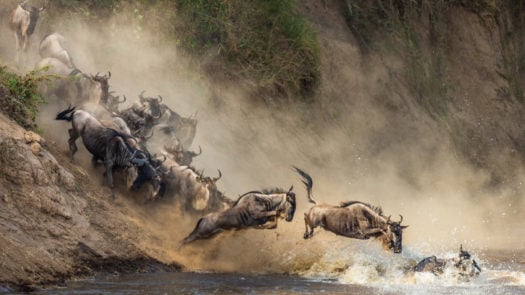
Southern Africa has several year-round safari destinations in both Botswana and South Africa. That said, temperatures in South Africa tend to be the most pleasant in April, May, September and October. The best time to visit Botswana for lush green landscapes and fewer crowds is May, the start of cooler dry winter. June through to September are the optimum months for wildlife viewing and October is typically hot, great for wildlife viewing and usually quieter in terms of travellers than the peak months of July, August and September.
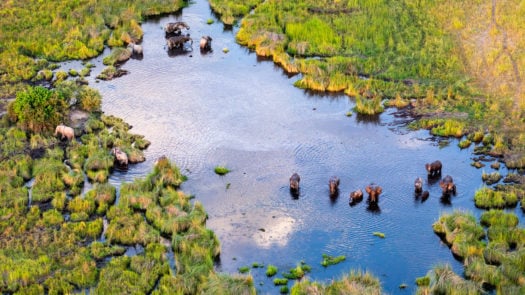
The dry season in both Zimbabwe and Zambia runs from around April or May to October or November and is ideal for wildlife spotting, while Victoria Falls are at their peak from March to May. The best time to visit Namibia is the dry winter from May to September, and the beaches of Mozambique are also best enjoyed during these drier months.
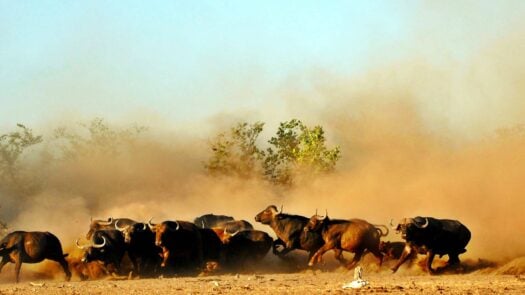
How long should my safari be?
This depends on the destination and your interests, but we generally suggest spending three to four nights in each camp or lodge, and combining at least two different places if possible. You’ll likely need to spend a night or two in larger cities or towns as you move between destinations, but luckily there’s plenty to do in these travel hubs too.
Some experiences need a certain amount of time to be fully enjoyed. For example, we recommend three nights for gorilla trekking in Rwanda so that you can do at least two treks, plus one to see golden monkeys. If you want to see a bit of everything, consider booking a grand tour of Africa to hit the highlights of both East and Southern Africa in the same trip.
What kinds of safari vehicles are there?
Whether you’re on a safari in Southern Africa or East Africa, the type of vehicle will depend on the terrain and environment. The most common vehicle is an open-sided jeep, and we always keep groups small so that everyone gets a window seat (usually four to six people per jeep). In the Ngorongoro Crater, vehicles are closed due to dusty conditions and longer journeys. Across Africa, private vehicles can often be arranged prior to arrival.
In certain places you can also choose other safari vehicles like ATVs, fat bikes or even boats. Walking safaris can be especially exciting, allowing you to connect with nature on a deeper level. And if you want a bird’s-eye view, a helicopter or hot air balloon safari can give you a whole new perspective of East or Southern Africa’s incredible scenery and wildlife.
Should I go on safari in Kenya or South Africa?
Kenya (in East Africa) and South Africa are among the most iconic places on earth for safaris – but which is better? It completely depends on what you’re looking for, as each country has its own distinctive identity and appeal. Kenya is ideal if you want to see the Great Migration and get to know local cultures, while South Africa is hard to beat for classic Big Seven safaris.
If your heart is set on spotting a leopard in the wild, your best bet is Sabi Sands in South Africa. This country also has plenty of other perks, like Cape Town and the Winelands – while Kenya is home to Mount Kilimanjaro and the romantic Laikipia Plateau. The choice of Kenya vs South Africa is definitely a tough one, but you really can’t go wrong either way.
Family Trips to East Africa and Southern Africa
Taking your family on safari in East Africa or Southern Africa can be an absolutely unforgettable experience. Both regions are great for kids of all ages, but certain destinations and lodges are especially well-suited to luxury family travel. The best family safari lodges in Africa feature special accommodation and activities for children and teenagers.
Southern Africa has an abundance of options for families with young kids. The malaria-free Madikwe Game Reserve and Tswalu Kalahari Reserve are fantastic for families, and some of our favourite lodges provide swimming pools to keep kids entertained at camp. Consider Londolozi in the Sabi Sands private reserve or Morukuru Family in Madikwe.
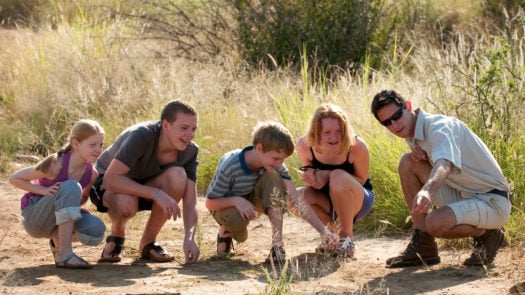
East Africa is ideal for families with older kids and teenagers, as there are endless adventures and activities available. Kenya offers experiences like horse riding and helicopter rides to complement the usual safaris. Rwanda is generally best for families with teenagers, as gorilla trekking in Volcanoes National Park is limited to travellers aged 15 and up.
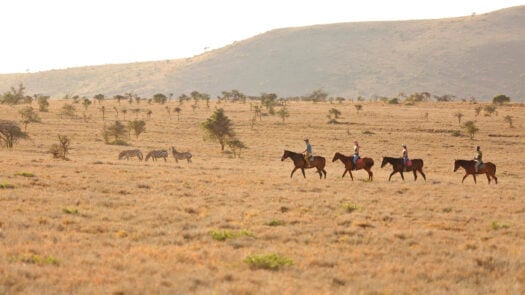
Honeymoons in East Africa and Southern Africa
A honeymoon in East Africa or Southern Africa is the perfect combination of romance, relaxation and excitement for adventurous couples. The best honeymoons in Africa offer exceptional privacy, top-notch luxury and once-in-a-lifetime experiences, so it’s important to choose your destination and accommodation carefully.
In East Africa, Tanzania is a particularly lovely place for a honeymoon. The massive Singita Grumeti private reserve is the stuff dreams are made of, offering unparalleled privacy and some of the most romantic accommodation in the world. Kenya is also home to several lavish lodges with privileged locations for wildlife spotting.
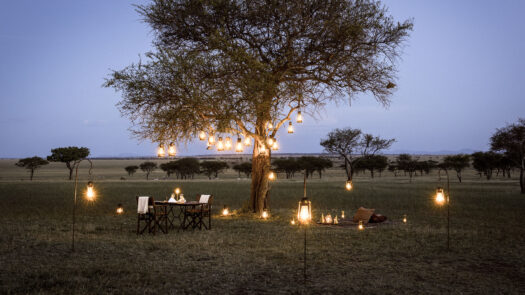
In Southern Africa, Botswana is an incredible choice for honeymooners. Xigera Camp in the Moremi Game Reserve is one of the most luxurious properties in the country, featuring unbelievable attention to detail. And there’s no shortage of romantic safari lodges in South Africa, from the ‘floating’ suites of Tengile River Lodge to the secluded opulence of Molori.
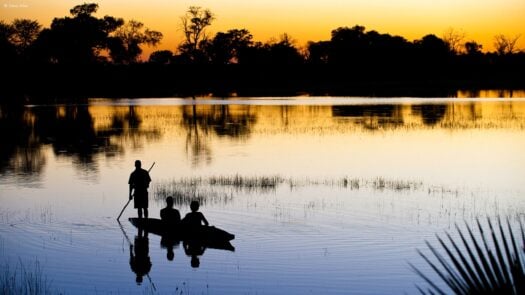
Embark on your dream safari
Deciding on your next adventure can be challenging, but our team of safari experts are here to guide you through every step, ensuring your trip in Botswana takes you to the most incredible camps and most interesting destinations, spotting the Big Five and more along the way.
